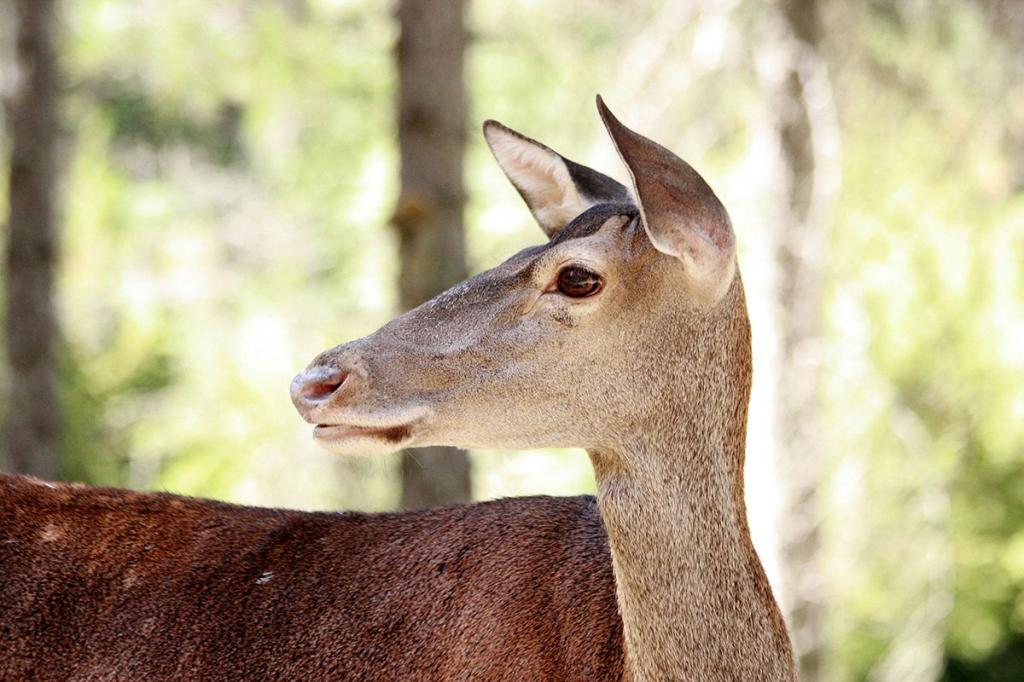Divulgazeral
Nutritional health in red deer: it is about age

Age, a key determinant in the management of nutritional deficiencies in the Iberian red deer
Wild ungulates hunting, management and farming are important socioeconomic activities in rural areas across Europe, being the Iberian red deer (Cervus elaphus hispanicus) the most important large game species in Spain. These animals mostly depend on food and mineral resources available in the environment (plants, soils, water) to keep the required physiological ranges of essential elements, such as copper (Cu), selenium (Se), zinc (Zn) and manganese (Mn), among others, which are key for biological functions. Despite they are essential nutrients –living organisms need them to live–, too high levels may be toxic; on the other side, their essentiality make too low levels to cause nutritional deficiencies, which are also negative for health.
Physiological balance of these nutrients in animals can be affected by several endogenous and exogenous (environment) factors, and among the endogenous, age is especially relevant. Thus, changes in the status of essential elements over life may be indicative of periods of vulnerability to deficiencies, which may have important implications in the management of both wild and captive deer populations. The role of these minerals in the antioxidant system –the set of mechanisms and cellular components fighting against harmful free radicals– implies that, in many cases, nutritional deficiencies are associated to diseases related with the generation of oxidative stress, a physiological disorder that happen when free radicals win the battle against antioxidants.

A research led by the Wildlife Toxicology Group of the Instituto de Investigación en Recursos Cinegéticos (IREC – CSIC, UCLM, JCCM), in which we had the chance to participate, have studied age-related variations in blood levels of Cu, Se, Zn and Mn in a population of female Iberian red deer living in semicaptive conditions. The research also included the analysis of some stress biomarkers –cellular components that enable the identification of oxidative stress conditions in tissues and organs–, such us the antioxidant enzymes glutathione peroxidase (GPx) and superoxide dismutase (SOD) – which depend on these nutrients to work– and the vitamins A and E (chemically known as retinol and α-tocopherol, respectively), which also fight free radicals.
Results show that nutritional health in these animals is age-dependent, female deer during their first year of life being especially vulnerable to suffer Se and Cu deficiencies. The close relationships between the physiological status of essential elements and stress biomarkers also reveal the risk, for deficient animals, of suffering neuromuscular pathologies such as the enzootic ataxia and the white muscle disease, both linked to Cu and Se deficiencies and the generation of oxidative stress conditions. In clinical cases, both diseases produce slow and progressive limbs weakness and paralysis in affected animals, which are impeded for normal movement.

The study and interpretation of essential nutrients and stress biomarkers in blood, as well as the relationships among them, has proven to be useful tools for the diagnosis of nutritional disorders and associated diseases in the Iberian red deer. These results may be helpful for managers in order to prevent or reduce the incidence of clinical cases, reducing associated treatment costs and improving animal welfare.
Because a picture is worth a thousand words, here you can watch a video abstract of the research.
The scientific publication of this research is available at:
- Pareja-Carrera, J., Rodríguez-Estival, J., Martinez-Haro, M., Ortiz, J. A., Mateo, R. 2018. Age-dependent changes in essential elements and oxidative stress biomarkers in blood of red deer and vulnerability to nutritional deficiencies. Science of the Total Environment 626, 340-348.
Are you interested in Environmental Sciences and Science communication?
Subscribe to our Newsletter at the end of our website!
Are you a scientist in the field of Environmental Sciences and would like to disseminate the results of your work in Divulgazeral?
Contact us in info@azeral.es!

